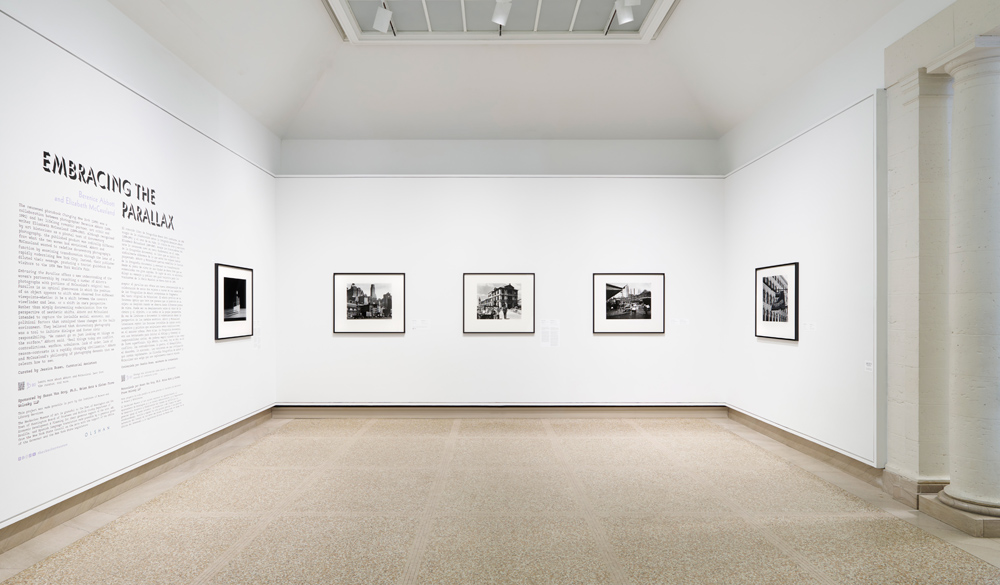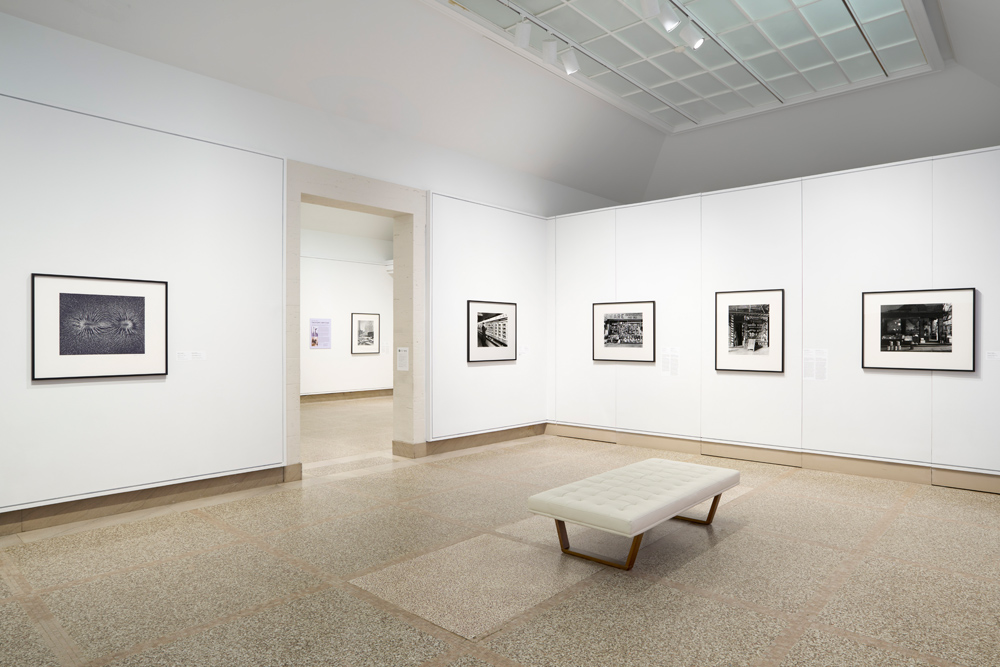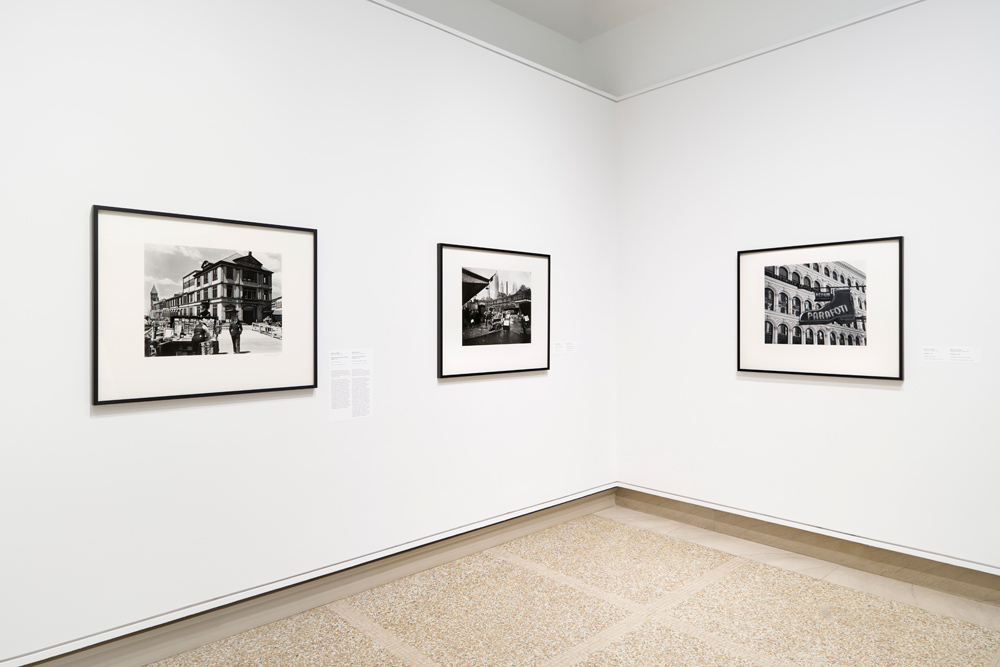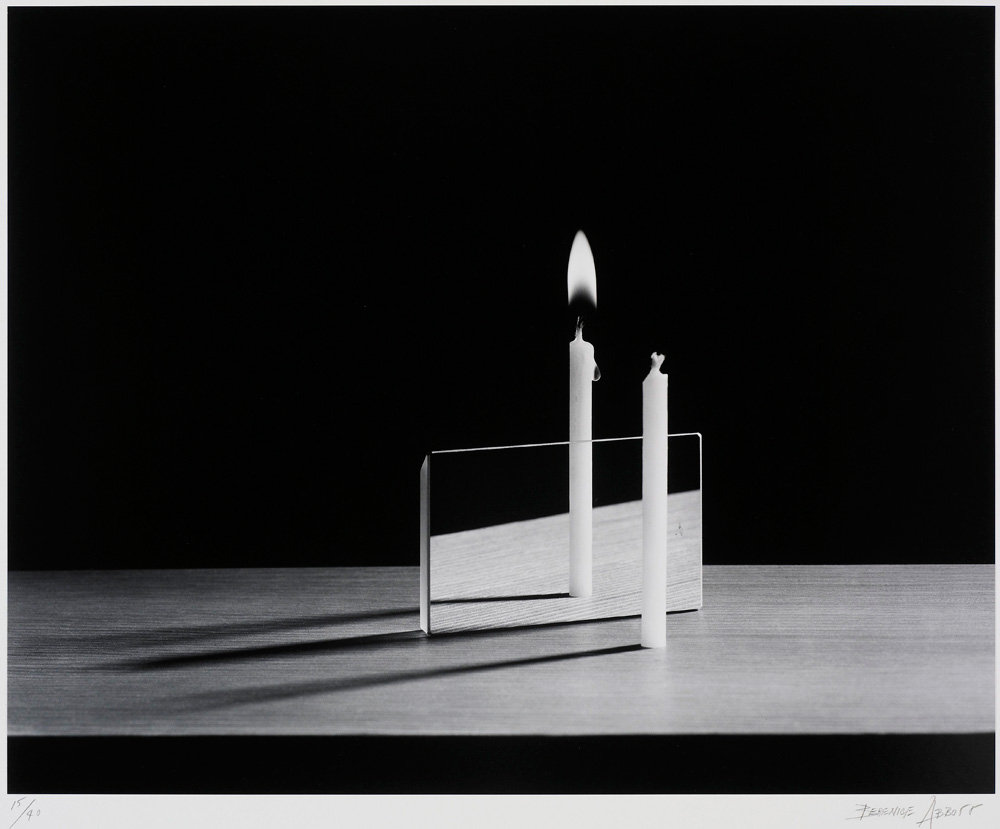Berenice Abbott and Elizabeth McCausland at the Heckscher Museum of Art, USA
Exhibition texts and images courtesy of the Heckscher Museum of Art, USA

Installation view from Embracing the Parallax: Berenice Abbott and Elizabeth McCausland at the Heckscher Museum of Art, USA
Embracing the Parallax: Berenice Abbott and Elizabeth McCausland
February 2 – March 30, 2025
at The Heckscher Museum of Art, USA
The renowned photobook Changing New York (1939) was a collaboration between photographer Berenice Abbott (1898–1991) and her lifelong romantic partner, art critic and writer Elizabeth McCausland (1899–1965). Although recognized by art historians as a pivotal text of documentary photography, the published product was radically different from what the two women had envisioned. Abbott and McCausland wanted to redefine documentary photography’s function by examining transformation through the lens of a rapidly modernizing New York City. Instead, their publisher diluted their message, producing a tourist guidebook for visitors to the 1939 New York World’s Fair.
Embracing the Parallax offers a new understanding of the women’s partnership by reuniting a number of Abbott’s photographs with portions of McCausland’s original text. Parallax is an optical phenomenon in which the position of an object appears to shift when observed from different viewpoints—whether it be a shift between the camera’s viewfinder and lens, or a shift in one’s perspective. Rather than simply documenting modernization from the perspective of aesthetic shifts, Abbott and McCausland intended to capture the invisible social, economic, and political factors that catalyzed these changes in the built environment. They believed that documentary photography was a tool to initiate dialogue and foster civic responsibility. “We cannot go on just looking at things on the surface,” Abbott said. “Real things today are conflict, contradictions, warfare, unbalance, lack of order, lack of reason—contrasts in a rapidly changing civilization.” Abbott and McCausland’s philosophy of photography demands that we relearn how to see.
Curated by Jessica Rosen, Curatorial Assistant

Installation view from Embracing the Parallax: Berenice Abbott and Elizabeth McCausland at the Heckscher Museum of Art, USA
Changing New York
During the Great Depression, with funding from the U.S. Government’s Works Progress Administration, Abbott documented New York City with her camera. McCausland described her photographic series as “an epic of the metropolis united by [the] dynamic theme, change.” Witnessing “the past jostling the present,” Abbott captured the city in flux by depicting “the skyscraper in relation to the less colossal edifices which preceded it.”
In 1939, the duo began to work on a volume pairing Abbott’s photography from the last four years with McCausland’s writing. As they explored dynamic layouts, McCausland envisioned, “words and photographs marching along beside each other, complimenting each other, reinforcing each other.” Yet their publisher rejected their ideas, reordering and eliminating some of Abbott’s photographs, and almost entirely rewriting McCausland’s overtly political text. Their work was reduced to a commercially appealing series of images with short captions meant to serve the interests of the New York World’s Fair. Society’s systemic overlooking of women, lesbians, and photographers in the 1930s and beyond ultimately led to an abandonment of their original vision.

Installation view from Embracing the Parallax: Berenice Abbott and Elizabeth McCausland at the Heckscher Museum of Art, USA

Berenice Abbott, Parallax (Candles), 1951. Silver gelatin print, The Heckscher Museum of Art, Gift of Mr. Morton Brozinsky, 1983.10.6.
Capturing Reality by Illuminating the Unseen
Throughout her career, Abbott upheld the philosophy of photography that she developed with McCausland: exposing the invisible forces that shape our world. Abbott documented the impact of the rapid modernization of America, both before and after her project Changing New York. In 1935, she and McCausland took a month-long road trip through parts of the Midwest and South; in 1954, Abbott and two colleagues travelled the length of the East Coast on U.S. Route 1. In her documentary photographs, Abbott sought to “get under the very skin of reality” as a way of spurring others to embrace their civic responsibilities.
In the 40s and 50s, Abbott turned to photographing scientific phenomena. She explained, “we live in a world made by science. But we—millions of laymen—do not understand or appreciate the knowledge which thus controls daily life.” Abbott continued her commitment to rendering the invisible visible in order to educate the public.
Related Links
Read more: Embracing the Parallax: Berenice Abbott and Elizabeth McCausland
Art Book: Berenice Abbott A Life in Photography by Julia Van Haaften (2018)